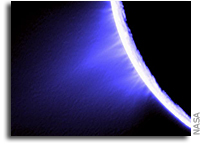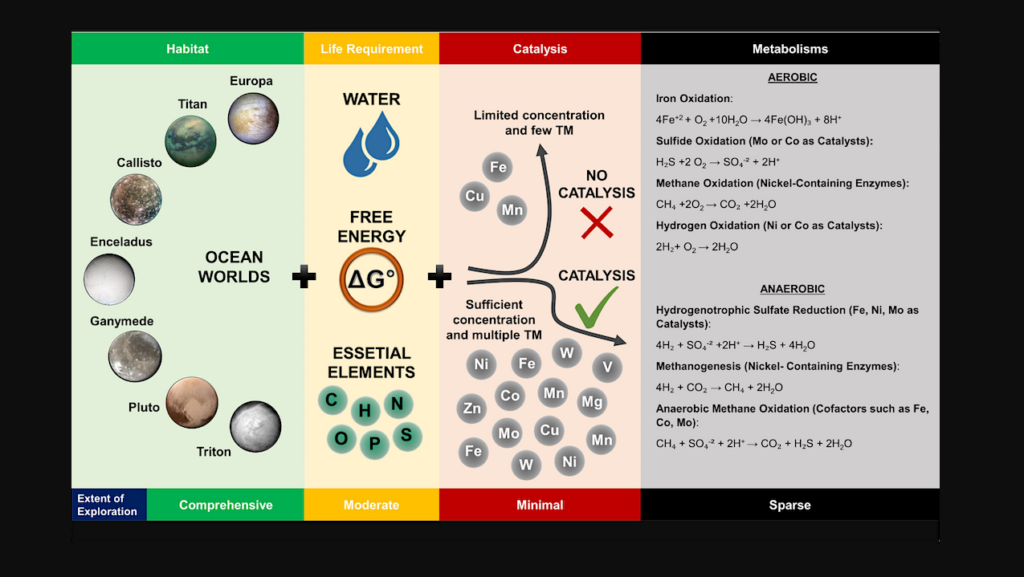Processing of Analogues of Plume Fallout in Cold Regions of Enceladus by Energetic Electrons

Enceladus, a small icy moon of Saturn, is one of the most remarkable bodies in the solar system.
This moon is a geologically active object, and despite the lower temperatures on most of its surface, the geothermally heated south polar region presents geysers that spouts a plume made of water (approximately ninety percent), carbon dioxide, methane, ammonia, and methanol, among other molecules. Most of the upward-moving particles do not have the velocity to escape from the gravitational influence of the moon and fall back to the surface. The molecules in the ice are continuously exposed to ionizing radiation, such as UV and X-rays photons, cosmic rays, and electrons. Over time, the ionizing radiation promotes molecular bond rupture, destroying and also forming molecules, radicals, and fragments. We analyse the processing of an ice mixture analogue to the Enceladus fallout ice in cold resurfaced areas (north pole) by 1 keV electrons.
The main goal is to search for complex species that have not yet been detected in this moon, and to determine relevant physico-chemical parameters, such as destruction and formation cross-sections and the half-life of the studied molecules in the ice. The experiment consisted of the electron irradiation of an Enceladus-like ice mixture (H2O,CO2,CH4,NH3, and CH3OH) in an ultra-high vacuum chamber at 20 K. The analysis was made by infrared spectrometry in the mid-infrared region (4000-800 cm-1 or 2.5-12.5 microns).The absolute dissociation cross-sections of the parent molecules, the formation cross-section of daughter species, and the half-life of the parental species in a simulated Enceladus irradiation scenario were determined. Among the produced species, CO (carbon monoxide), OCN- (cyanate anion), HCONH2 (formamide), and H2CO (formaldehyde) were tentatively detected.
A. Bergantini, S. Pilling, B. G. Nair, N. J.Mason, H. J. Fraser (Submitted on 3 Nov 2014)
Subjects: Earth and Planetary Astrophysics (astro-ph.EP)
Journal reference: A&A 570, A120 (2014)
DOI: 10.1051/0004-6361/201423546
Cite as: arXiv:1411.0554 [astro-ph.EP] (or arXiv:1411.0554v1 [astro-ph.EP] for this version) Submission history From: Alexandre Bergantini [v1] Mon, 3 Nov 2014 16:43:21 GMT (616kb) http://arxiv.org/abs/1411.0554








